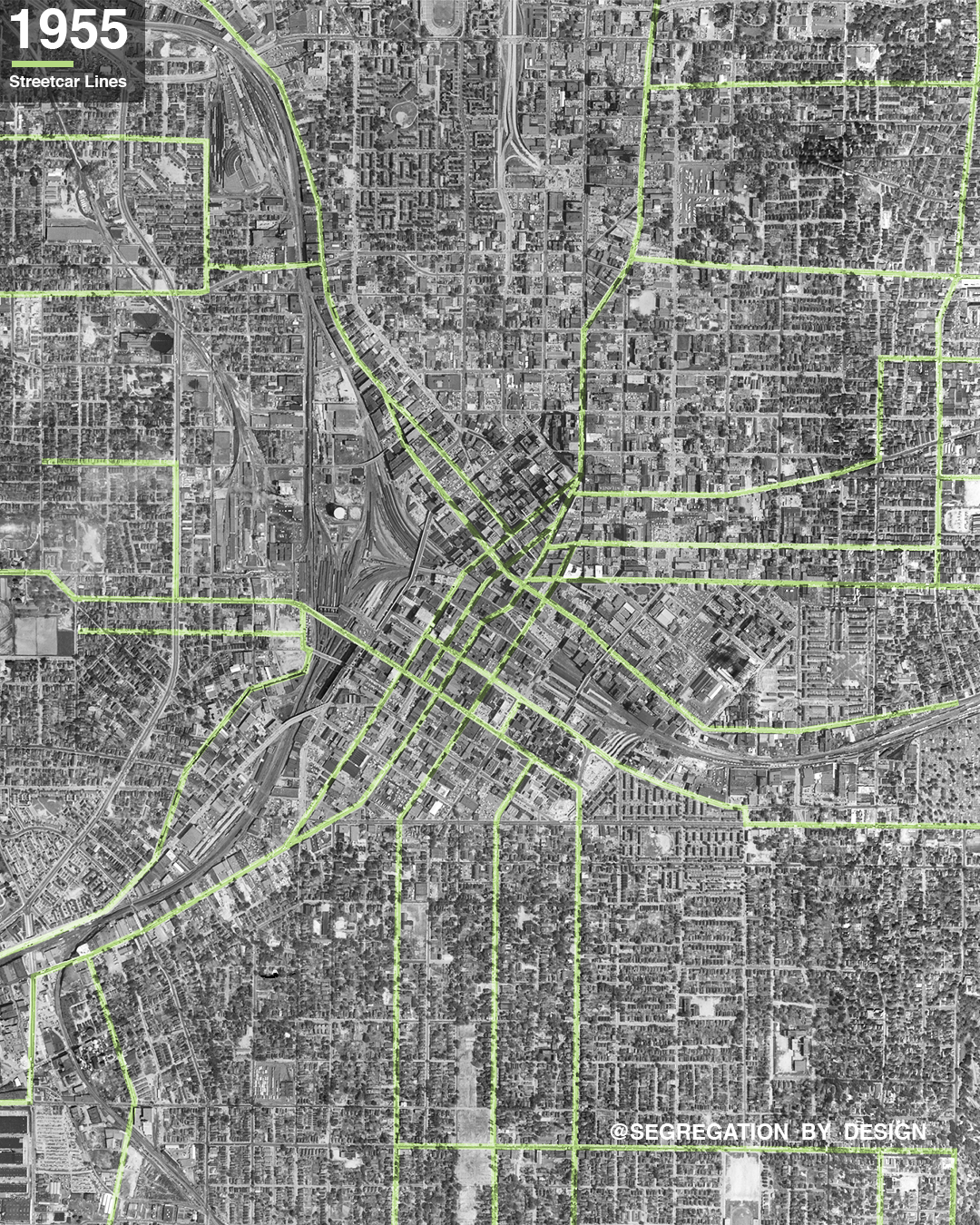ATLANTA: TRANSIT
Public transit systems were another victim of freeway construction and urban renewal. Atlanta's dense network of streetcars was ripped up in the 1950s, replaced with infrequent bus service. In cities around the country, new freeways and suburbanization led to an influx of automobiles on legacy infrastructure. This convinced many of the need to remove what were at the time viewed as obsolete streetcar systems (aka tram, or "light rail" in today's language) in order to free up space for cars. Moreover, because streetcars generally served the redlined areas directly adjacent to downtowns, there was little political will to revitalize systems which were of the most use to those in "blighted" areas (aka citizens of color and recent immigrants). In Atlanta, the streetcar system was entirely destroyed, forcing those who had previously relied on it to either buy an expensive automobile (and all related expenses) or to be left stranded in their own city.
While the conspiratorial actions of General Motors and National City Lines did indeed play a role in the dismantling of many cities' public transit systems, much more impactful was suburban and governmental antipathy towards the city in general. Mass transit and urban centers were a thing of the past, the thinking went; the car and the (white) suburb was the future. In addition, there was general public resentment from all classes towards the traction companies (the private operators that ran the streetcar systems), which were known for their corruption over the years. Rather than public takeover (as happened in San Francisco with the creation of the Municipal Railroad, known today as @sfmuni), when the traction companies went bankrupt most cities simply dismantled their streetcar systems and replaced them with buses. Today, American cities spend billions recreating just a small fraction of the systems they destroyed 50 years ago.



